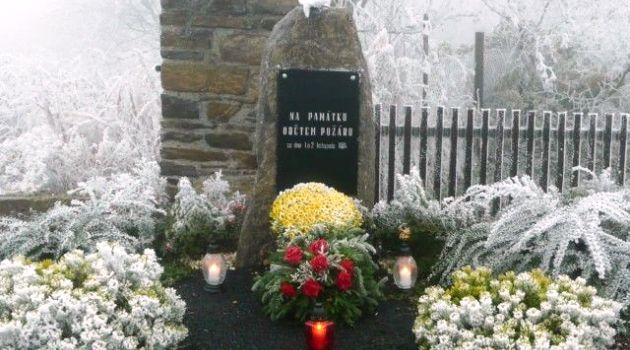Romani transgender man, famous as subject of Czechoslovak film, commits suicide

News server iDNES.cz reports that René Lízna, previously known as Eva Kováčová, has passed away. In the year 1984 the Romani girl set fire to a social care institute in the town of Měděnec in northern Bohemia, causing the death of 26 patients.
Ms Kováčová later underwent a sex change operation and took the name René Lízna. After running away from a treatment facility in Brno this summer, René Lízna tragically ended his life by jumping in front of a train.
Film director Filip Renč made a feature-length dramatic film about Eva Kováčová, 1992’s "Requiem pro panenku" (Requiem for a Maiden), but many critics claimed his version of the story was a distortion of reality. Thirty years after Ms Kováčová set the most tragic fire in postwar Czechoslovakia, René Lízna has now committed suicide.
"I can confirm that we are handling the death of a 46-year-old man that occurred in July of this year. We are considering it suicide. He has been identified, but DNA tests will also be undertaken," Brno Police spokesperson Andrea Straková said.
In 1984, as a girl of 16, Eva Kováčová set an institution on fire after spending four years there. She was subsequently imprisoned, released, underwent a name change and sex change, set yet another fire, and was then sent to the Psychiatric Hospital in Brno.
On 25 July of this year, René Lízna left that treatment facility to take a walk and never returned. Police began searching for him.
It is probable that he died soon thereafter under the wheels of a train just a few kilometers from the facility. "A man was found who had died on 26 July on the track between Černovice and Židenice in Brno," Straková said.
1 November marked the 30th anniversary of the fire in Měděnec. In the late night hours of 1 November and early morning hours of 2 November 1984, Ms Kováčová set a wardrobe ablaze there; the fire rapidly spread, and the wooden building went up in flames.
There were 26 wards in the institution who burned to death. "I didn’t know it would go that far. I wanted to save those who still had a hope of living," René Lízna said in a 2009 interview.
He was well aware of what he had done. "I can’t look anyone in the eyes, I have the deaths of many people on my conscience," he said.
During the blaze, Ms Kováčová helped carry the victims out of the flames, so it did not occur to anyone that she was the arsonist. She confessed to what she had done a few days later and was sentenced to five years in prison; she later physically assaulted a guard there and her sentence was extended.
She was released from prison in Pardubice nine years later, in 1993. František Lízna, a Jesuit priest, took her in, and she lived in his home for six months.
Ms Kováčová suffered from fits of aggression and attempted suicide several times. It was thanks to the priest that her transformation into the man named René began, and out of gratitude for her benefactor, she took his surname.
René Lízna lived for 10 years with a woman who ultimately ended their unbearably demanding relationship. Lovelorn, he then set his apartment on fire, endangering other occupants of the building.
He was supposed to return to prison, but psychologists decided he was mentally ill. He ended up in a psychiatric treatment facility in Brno, where he lived until this summer.
As a girl, Ms Kováčová experienced a harsh childhood full of parental abuse, living sometimes with her family and sometimes in children’s homes. She gradually began to realize that she did not belong in a girl’s body and that she had been born the wrong sex.
Her troubles and unruliness may also have been determined by that fact. "People with transsexuality often experience great suffering, which they compensate for through aggression, for example, or they suffer from anxiety and depression," sexologist Helena Fifková, who helped Ms Kováčová transform into René, told news server iDNES.cz five years ago.
Ms Kováčová, who was sent to an institution for mentally disabled girls at the age of 12, was described as out-of-control but otherwise healthy; she set the institution on fire four years later. Two governesses at the institution were also blamed for the tragedy, as they allegedly failed their problematic ward and treated her cruelly.
However, it was apparently a problem in and of itself that Ms Kováčová was ever placed with the institution in the first place. She did not belong there and was aware of it.
She frequently ran away, harmed other wards, and disrupted the operations of the facility as a whole. "In my opinion the main culprit for this unfortunate incident was the system that was in place back then, which made no effort to place uncontrollable children where they actually belonged," Marie Plevková, a governess who was working that fateful night at the institution in Měděnec, told news server iDNES.cz.